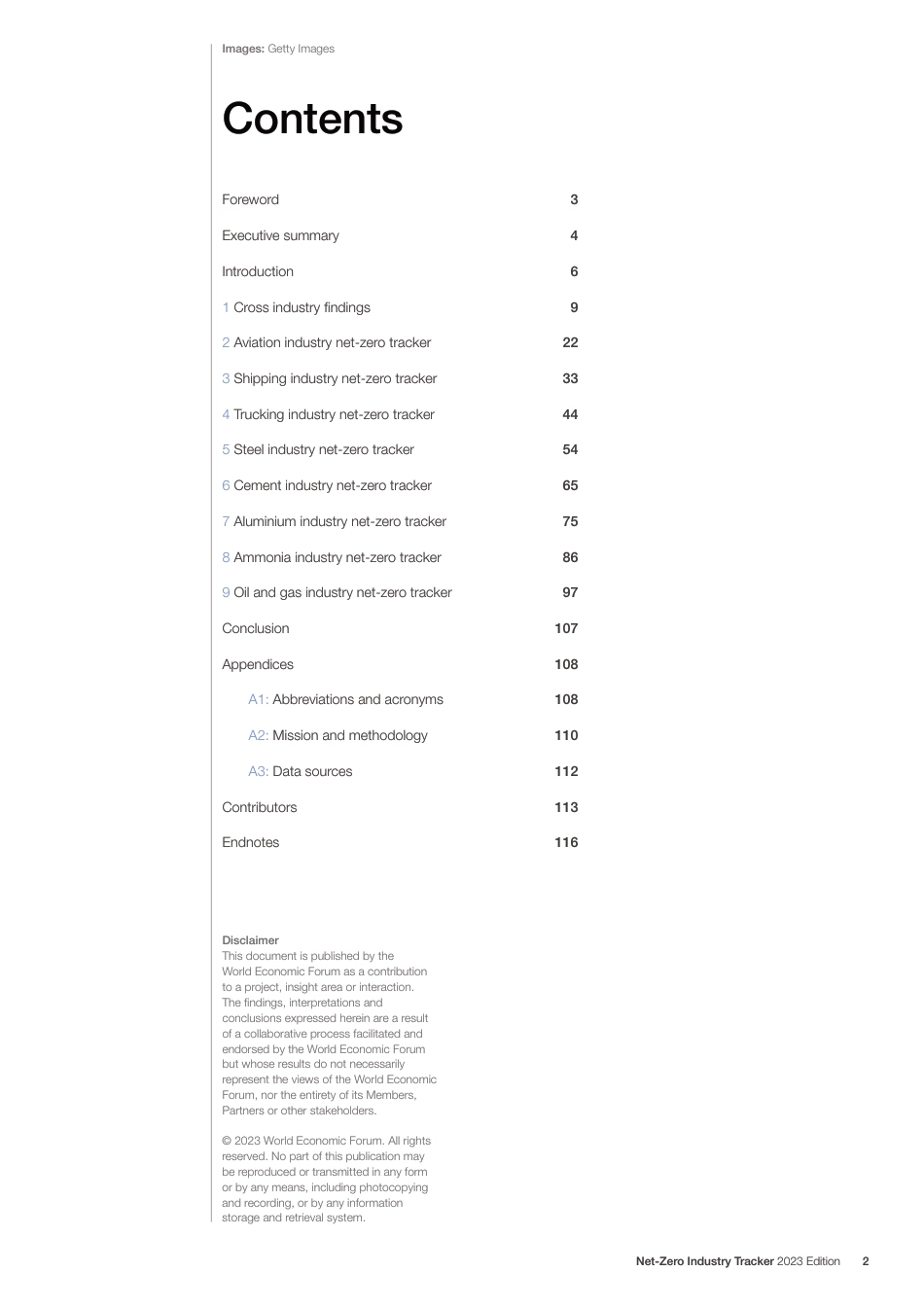Net-Zero Industry Tracker 2023 EditionI N S I G H T R E P O R TN O V E M B E R 2 0 2 3In collaboration with AccentureForewordExecutive summaryIntroduction1 Cross industry findings2 Aviation industry net-zero tracker3 Shipping industry net-zero tracker4 Trucking industry net-zero tracker5 Steel industry net-zero tracker6 Cement industry net-zero tracker7 Aluminium industry net-zero tracker8 Ammonia industry net-zero tracker9 Oil and gas industry net-zero trackerConclusionAppendicesA1: Abbreviations and acronymsA2: Mission and methodologyA3: Data sourcesContributorsEndnotesContentsImages: Getty Images34692233445465758697107108108110112113116© 2023 World Economic Forum. All rights reserved. No part of this publication may be reproduced or transmitted in any form or by any means, including photocopying and recording, or by any information storage and retrieval system.Disclaimer This document is published by the World Economic Forum as a contribution to a project, insight area or interaction. The findings, interpretations and conclusions expressed herein are a result of a collaborative process facilitated and endorsed by the World Economic Forum but whose results do not necessarily represent the views of the World Economic Forum, nor the entirety of its Members, Partners or other stakeholders.Net-Zero Industry Tracker 2023 Edition2ForewordIn a decade marked by economic expansion and surging demand for goods and transport, we face a paradoxical challenge: How can we address climate change while fostering economic growth and resilience? This challenge is particularly difficult for companies operating in the steel, cement, aluminium, ammonia, energy and transport sectors. These companies are critical to satisfying future demand and e...



